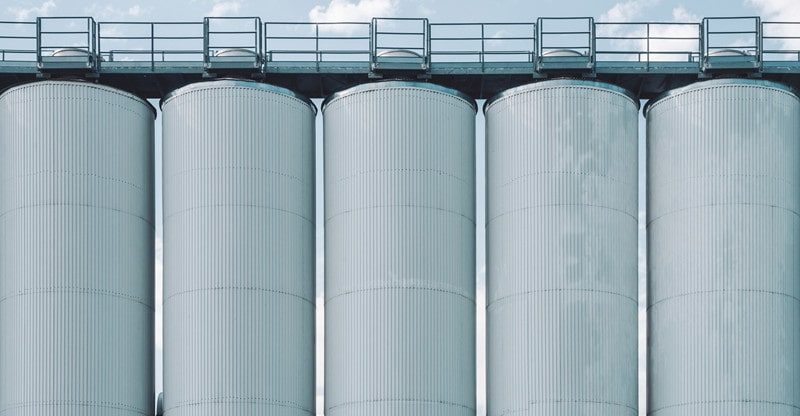Bulk Materials: Handling Involves Processing & Transfer Technologies
Bulk material is any substance offering a dry, lumpy, powdery, or granular consistency, for instance, grains, dry pet foods, or cement powder. The way manufacturers handle these depends on the material. As an example, compacting equipment is used to manage each constituent you’ll find comprising the bulk material that is rubbish which actually can consist of varied materials.
Handling of bulk materials involves engineering processes and transfer technologies where machines and structures are designed for seamless transference and processing of the supply within a specific space like an area in a factory. Bulk materials are generally a raw product that requires further manipulating.
They come to a processing plant or factory via ships, trains, or trucks, after which the products are unloaded with a conveyor belt or pneumatic conveyor system depending on the supply to either storage or an extensive yard. These are ultimately stockpiled, typically in silos.
Bulk Materials: Handling Involves Processing & Transfer Technologies
Bulk materials consist of supplies that are grainy, lumpy, dry, powdery, basically raw products that come to a facility for further processing and transfer to their ultimate storage silo.
These generally transfer from their transport mode using a type of conveyor, whether it’s a belt or a pneumatic system depending on the product’s density. Some of the most common options you’ll see in bulk include:
• Sand
• Pet food
• Ores/minerals
• Pellets (plastic)
• Coal
• Chemicals
• Grains
• Salt
• Flour
• Sugar
The idea behind handling these products is to safely convey the materials within the processing space or in the factory. The flow rate or speed and other parameters are determined based on the material traits.
These will also define the level of protection the handling system requires. Some supplies are abrasive in texture, creating a need for coating or a ceramic layer within the system to prevent damage to the components.
Toxic or flammables like sulfur power create exceptional hazards meaning gentle handling and a need for temperature control and calibration to control the flow rate to a cautious level. Find out details on the systems at https://www.processingmagazine.com/.
Traits of Bulk Materials
Engineers are responsible for designing the handling machines for seamless processing and transference based on the product’s characteristics. Some things taken into consideration include:
• Overall density
• Type or form (pellet, powder, granule, flake, etc.)
• Particle size
• Properties (flammability, abrasiveness, toxicity)
• Liquid consistency (“hygroscopy” or moisture level)
With some products, special handling is necessary for overall safety, especially those related to food. Any equipment that will handle food-grade products needs to maintain sanitary compliance. There are also rules and regulations on strict hygiene requirements for the pharmaceutical industry. The items need to be contaminant-free, and there are stringent containment guidelines.
Each type of material will have its own set of rules meaning sand and pellets will differ from the specification set aside for pharmacy and food.
Components Of Bulk Material Handling Systems
Each industry designs a bulk material handling system specific to their products and the processing facility or factory. A large portion of the manufacturers will need a strategy in place that’s custom-created, but some components are standard.
Structures that are fixed are permanent elements of these systems that do not need recalibration. These consist of items like:
• Conveyors (screw)
• Conveyors (belt, pneumatic)
• Conveyors (tubular drag)
• Motors
• Moving floors
• Reclaimers
• Hoppers
• Top loaders
• Stackers
• Bucket elevators
With mobile components, the materials can be transported offsite, within the manufacturing facility or processing plant, or delivered to the processing area. These consist of:
• Wagons
• Dumpers (truck)
• Dumper (railcar)
• Loaders
• Shuttles (varied)
• Ship loaders
Other essential aspects of bulk material handling include:
• Stockpiles
• Stockyards
• Storage facilities
• Silos
You’ll find these most often on site but typically within separate buildings. The more advanced a system is, there will be AI management technology and automated robotics.
Maintenance And Upkeep
Replacing aged or damaged elements is critical with these systems. It would help if you never waited until the very last second to take care of problems or have a defect checked out since this could put the entire system in jeopardy, create unnecessary downtime, and add to budgetary expenses.
It’s much more efficient and budget-conscious to employ upgrades and handle repairs using modern, high-quality components. That will equate to better productivity in the long term. Go here for guidance on a much more efficient operation.
In order to stay on top of upkeep, it’s essential to incorporate preventative maintenance so minor defects are caught early and handled before they turn into major problems or significant repairs and so the system can remain current.
That will involve regular cleaning for optimization of the system’s lifespan, including removing any signs of rust plus oiling/greasing moving components to reduce potential friction and keep the parts functional for an extended period.
Ensure you understand the methodology behind the celebration of the elements to those systems with advanced technologies to achieve the greatest efficiency and maintain a sense of safety and security. Controlling a manufacturing facility’s interior climate is essential since air “stratification” and the processing heat can produce inadequate conditions depending on the type of material.
Final Thought
Even in the manufacturing industry, the atmosphere is becoming much more advanced in some aspects with the design of processing and transfer technologies. With some sectors, it’s gone full throttle into the technological threshold with AI and automated robotics. For many, the determination of how far they’ll go has some basis on the type of materials they handle.
Looking at it from a more competitive standpoint, the greater the involvement companies have pertaining to technology, the increase in the efficiency and a significant evidence of effectiveness they’ll see with optimum growth and overall success of the business.
Some bulk material handlers are implementing technological advancements for processing and transfer purposes with good results. The idea is to customize your platform, so it’s unique to you. That allows you to then stand out from others doing similar processes compared to yours. That’s the goal to outshine the competition.



